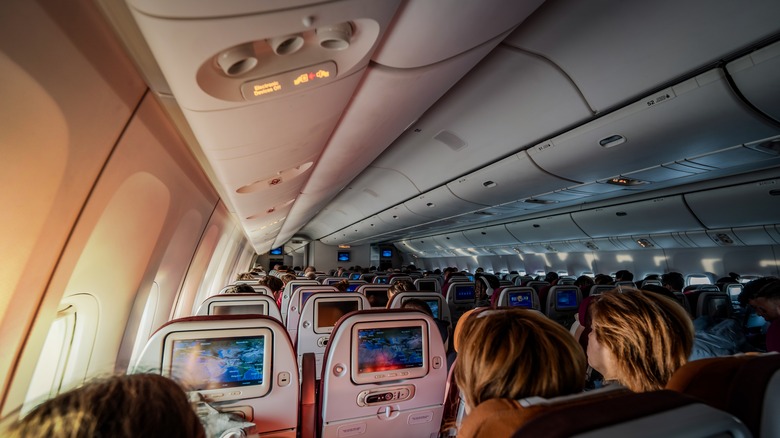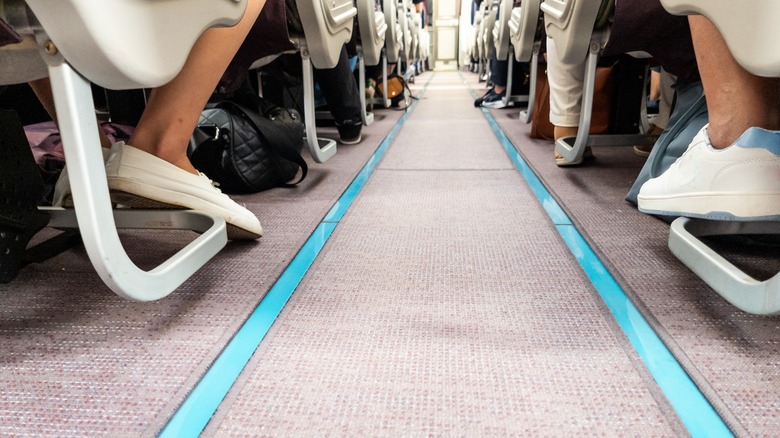The Disturbing Reason Flight Attendants Dim Plane Lights During Landing
Flight attendants have a hard job. They look after the safety of those on board, take care of our needs, and act as a liaison between the pilots and the those traveling. Flight attendants even notice things about you as you board, like whether you can be helpful during an emergency situation, or if you seem intoxicated so they can prevent difficult situations.
They also have tasks like dimming the lights during takeoff and landing, which you may have wondered about. There is a good, if disturbing, reason for that. Particularly, when a plane takes off or lands at night, having the lights dimmed allows people's eyesight to adjust quickly if things go wrong and they have to evacuate. If you've ever gone from bright sunshine into a dark room, you know that can take a bit of time, and during an emergency, you may not have much.
In addition, flight attendants will have you raise the window shades so they can observe any obstructions or issues outside the plane during an emergency (which the dimmed lights help with as well). While it may freak you out a bit to learn that (or why flight attendants sit on their hands during takeoff and landing, which is part of the brace position they need to be in), it's a safety measure that can save lives.
Understanding the dimmed lights on planes during takeoff and landing
Seeing the lights dim might make you think the plane is losing power, or that there is only enough to go to the flying of the plane (maybe it's just us?), but that's not the case. However, power is a factor. If a plane loses power, it's imperative that passengers are able to see the exit lights along the floor in the confusion, which may possibly involve smoke. Those lights are made using glow-in-the-dark tech, so if the plane does experience a loss in power, these lights can still be seen and followed.
In fact, the lights need to stay bright for up to 16 hours. If we're in a bright room and move into a dark room, it can actually take between 20 and 30 minutes to fully see completely, depending on how bright the light was before, which is called "dark adaptation."
The Flight Safety Foundation says we can lose up to 83 percent of our ability to find our way during an emergency with smoke and fumes, so anything that can be done to help is a good thing. We're not trying to scare you, here. Knowing the reasons why things are done on a plane, and how they keep you safe can help you fly with more confidence.
According to the Massachusetts Institute of Technology (MIT) (via Forbes), the risk of dying due to air travel was 1 in 13.7 million from 2018 to 2022. Those are pretty darn good odds. That said, if this does make you nervous, there are some things you can try. First, frequent travelers swear by noise-canceling headphones to soothe anxiety, so it's worth trying that out. In addition, many airlines have soothing programing or meditation on their in-flight entertainment systems to help you stay calm and relaxed.

